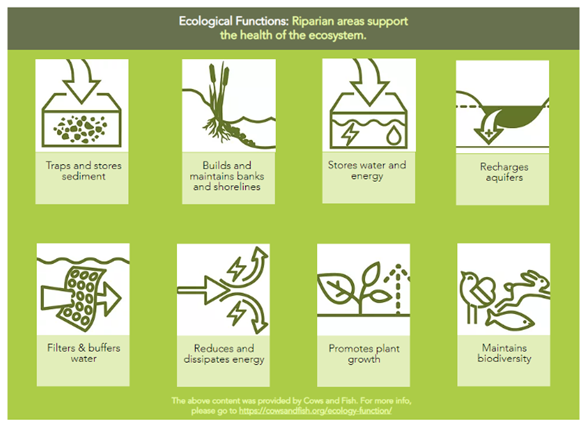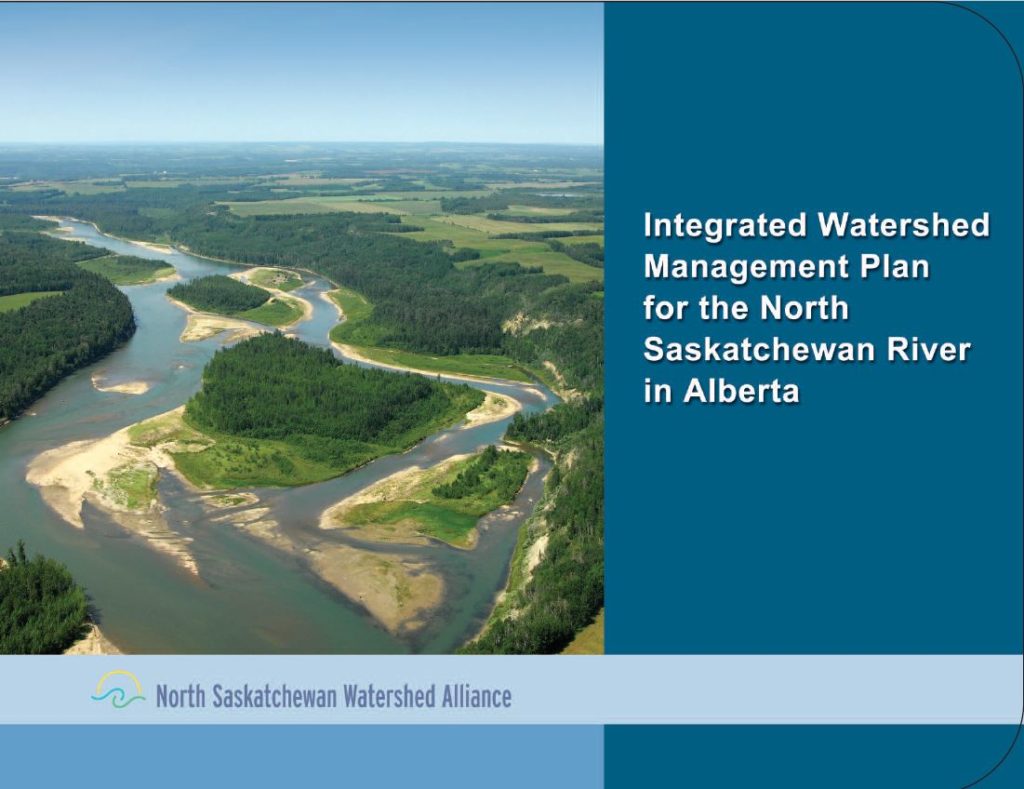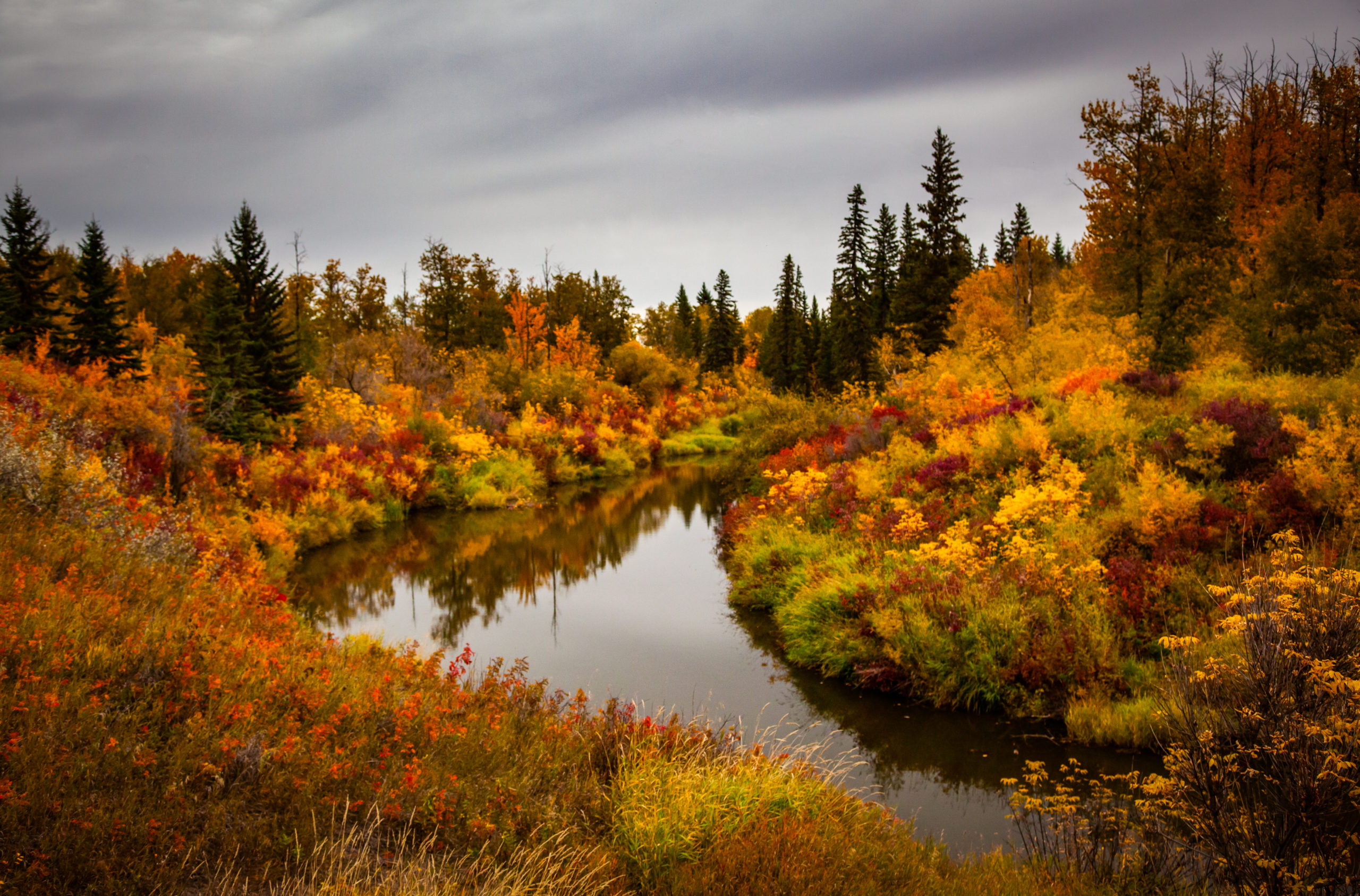What are Riparian Areas?
“Riparian lands are transitional areas between upland and aquatic ecosystems. They have variable width and extent above and below ground and perform various functions. These lands are influenced by and exert an influence on associated water bodies, including alluvial aquifers and floodplains. Riparian lands usually have soil, biological, and other physical characteristics that reflect the influence of water and hydrological processes.” (Alberta Water Council, 2013)


Why are riparian areas important?
Riparian lands are vital natural infrastructure in watersheds. Riparian areas play a significant role in maintaining water quality and aquatic ecosystem health. They also affect water quantity (e.g. instream flows and lake levels) and interact with groundwater. Riparian areas perform a myriad of ecosystem services as shown in the image.
How can we protect Riparian Areas?
The North Saskatchewan Watershed Alliance recognizes the need to protect riparian lands within our guiding document, The Integrated Watershed Management Plan (2012). The four action items identified in the IWMP are paraphrased as:
3.1.1. Develop health objectives for riparian areas
3.3.1. Assess the condition of riparian areas
3.3.2. Develop riparian policy guidelines
3.3.3. Support incentive programs that promote restoration and conservation of riparian areas

 A Healthy Riparian Area. Photo credit: Bill Trout
A Healthy Riparian Area. Photo credit: Bill Trout
What is the Riparian Health Action Plan?
In 2016, the NSWA followed a request from our Headwaters Alliance to develop the Riparian Health Action Plan (RHAP) to enhance collaboration between their existing riparian restoration programs. The Plan follows three phases:
Phase 1 Assess the condition of riparian areas in the North Saskatchewan watershed.
Phase 2 Development of a Riparian Strategy that sets riparian health objectives and provides advice on riparian policy and by-laws. We will also develop support tools that can guide riparian management.
Phase 3 Support landowners to conserve healthy riparian areas and restore degraded areas. The NSWA recognizes the existing network of riparian programs in the watershed that support landowners already, thus the NSWA will support this work through the development of the Riparian Web Portal
